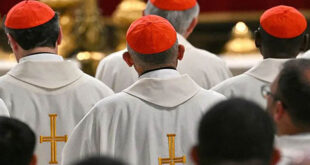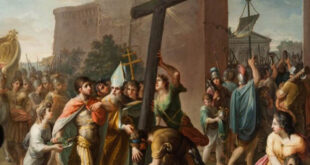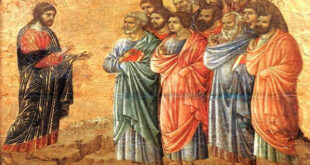Throughout the history of Christianity, there have been crucial moments that have shaped our understanding of the faith and how believers relate to the mysteries of God. One such moment was the Council of Chalcedon, held in the year 451. This council, which addressed one of the most fundamental questions in Christianity—the nature of Christ—remains key to our faith today. In this article, I will guide you through what happened at the Council of Chalcedon, the teachings that emerged from it, and how it impacts our faith life today.
The Context of the Council of Chalcedon: Why Was It Necessary?
To understand the importance of the Council of Chalcedon, we first need to look at the historical and theological context in which it took place. During the early centuries of Christianity, the Church struggled to clearly define and articulate who Jesus Christ was. We knew He was the Savior, the Son of God made man, but the precise way in which His divine and human natures related to each other was still a topic of great debate.
Earlier, at the Council of Nicaea (325) and the Council of Ephesus (431), the Church had clarified that Jesus was truly God and truly man. However, the exact relationship between these two natures had not been fully resolved to the satisfaction of all theologians of the time.
Some thinkers, like Nestorius, suggested that there were two separate persons in Jesus: one divine person and one human person, which implied an internal division. Others, like Eutyches, proposed that Christ’s human nature was “absorbed” into His divine nature, almost as if His humanity was dissolved. Both views presented serious problems for Christian doctrine: one undermined the true incarnation of God, and the other compromised the fullness of Christ’s humanity. Faced with these controversies, the Church convened the Council of Chalcedon to clarify and safeguard the central mystery of our faith.
What Happened at the Council of Chalcedon?
The Council of Chalcedon gathered over 500 bishops from across the Christian world in the city of Chalcedon, located in present-day Turkey. The aim was to resolve the conflicts over Christ’s nature and provide a clear formula that reflected the authentic teaching of the apostles.
After intense debates, the council issued the famous Chalcedonian Definition, which declared that Jesus Christ is one person with two natures, divine and human, which are united “without confusion, without change, without division, and without separation.” This means that while Christ has both a divine nature and a human nature, they are neither mixed nor merged, but neither are they divided or isolated. Jesus is fully God and fully man at all times.
What Does It Mean That Jesus Has Two Natures?
To better understand what it means that Christ has two natures, it’s important to delve into the teachings of the Council of Chalcedon. The council affirmed that Christ possesses two complete natures: one divine and one human. Here are the key points of this teaching:
- Christ’s Divine Nature: Jesus is the Son of God, of the same essence as the Father. He is eternal, omnipotent, omniscient, and shares all the attributes of God. In other words, Jesus is not a created being or a lesser entity than the Father; He is truly God.
- Christ’s Human Nature: Jesus is also truly human. He was born of the Virgin Mary, experienced hunger, fatigue, pain, and human emotions like the rest of us. He suffered and died on the cross in a real, not symbolic, way. This means that Jesus fully shares our humanity, except for sin.
- United but Not Mixed: The key point here is that these two natures—divine and human—are united in the person of Christ, but they are not mixed or confused. Jesus is not “part God and part man”; He is not a hybrid. Each nature retains its own distinct characteristics. For example, when Jesus performs miracles, He does so by virtue of His divine nature, but when He experiences hunger or pain, He does so by virtue of His human nature.
- One Person: Despite having two natures, Jesus is one person. There are not two separate “Jesuses.” He is one being who acts as both God and man. This is what theology refers to as the hypostatic union.
Why Is This Definition So Important?
The clarity the Council of Chalcedon brought to the nature of Christ was of enormous importance for the Christian faith, both in the 5th century and today. Here are some reasons why this doctrine is fundamental to our faith:
- Complete Salvation: If Jesus were not truly human, He could not redeem our humanity. Only by assuming our full human nature could He suffer and die for our sins. And if He were not truly God, His sacrifice would not have the power necessary to save us. Chalcedon affirms that our salvation is real and effective because Christ is fully God and fully man.
- A Perfect Example of Human Life: As a true man, Jesus shows us how to live a fully human life according to God’s will. His example is not unreachable; He is the model of the Christian life that we are called to follow.
- A God Close to Us: The doctrine of Christ’s two natures also assures us that God is not distant or remote. In Jesus, God becomes close, assuming our own flesh, living our experiences, and walking with us. This shows us the immense love of God, who not only creates us but also enters into our history to save us from within.
- A Guarantee of Future Hope: The glorified humanity of Christ gives us a guarantee of our own resurrection. If Jesus has risen, we too will rise like Him, body and soul, in eternal life.
Impact on the Daily Life of Catholics
The Council of Chalcedon is not just a historical or abstract theological matter; its teachings about the nature of Christ have a direct impact on how we live our faith. Here are some practical aspects:
- Prayer and Trust: Knowing that Jesus is both God and man invites us to place our complete trust in Him. When we pray, we are not only speaking to a distant divine being but to someone who fully understands our human struggles and emotions.
- Participation in the Sacraments: The sacraments, especially the Eucharist, are a concrete expression of this union between the divine and the human. In the Eucharist, we receive Christ, God and man, who is truly present and draws near to us to nourish us spiritually.
- Relationships with Others: If Christ assumed our humanity, then every human being has an incomparable dignity. This leads us to respect, love, and serve others, especially the most vulnerable, as Christ did.
Conclusion
The Council of Chalcedon is a decisive moment in the history of the Church that provides us with a clear and profound understanding of who Jesus is. By affirming that Christ is one person with two natures, divine and human, the council secures both our salvation and the certainty that God walks with us at every moment of our lives. This teaching is not only central to the Catholic faith, but it also invites us to live our Christian lives with greater trust, hope, and love. Just as the early Christians did, today we continue to proclaim: Jesus Christ, true God and true man, is our Savior and Lord.






